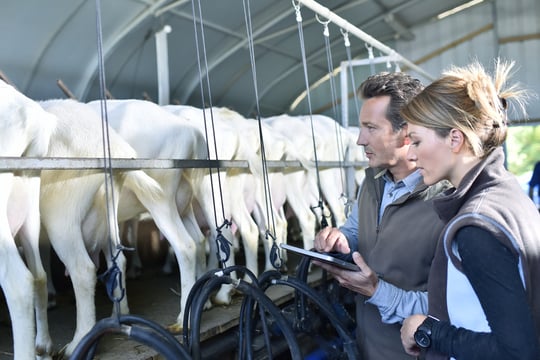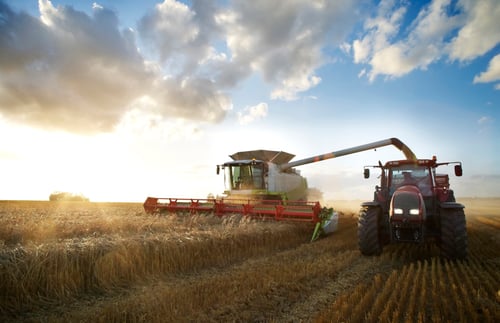Sensor implementation: the process from development to integration

Are you looking to get started on developing a sensor that will make your machine even smarter and more future-proof for the agricultural sector? That makes sense, because it will ensure higher profitability for your agricultural equipment and installations. But how does the process from developing a sensor to integration work? We will tell you all about that in this blog. We'll take you through the steps taken by the sensor specialists at Sentech. So you will know where you stand and when you can install the latest sensor technology in your equipment or installation.
Sensor implementation step 1: exploration
In this phase, we explore the issue together in depth. We ask a lot of questions in the process. A whole lot of questions. This is because we want to know every detail about the user and the application. You can look at it as a kind of challenge, where we encourage you to think even deeper. We map out the environment, everything that is involved, the application and exactly what the sensor needs to do. Down to the very last detail. We also determine which technologies are best and whether to use one sensor for this, or perhaps sensor fusion? Once all of these details are clear, we incorporate them into a comprehensive set of technical specifications. This exploratory process is also called the creative phase, where we examine the situation and think about how we are going to tackle the issue.
Sensor implementation step 2: feasibility & proposal
Once we have come up with a solution, we check whether or not it is technically feasible. Can we actually produce what we came up with in the way we envisioned? Then we look at whether this technology is affordable. This is not exactly unimportant after all. We can come up with the most remarkable concepts, but they also have to be financially doable in the end. So in this phase we take the time to ensure technical and commercial feasibility. Only when we have the green light for both of these aspects will we move on to the next step.
Sensor implementation step 3: product design
Once we understand the issue and have come up with a solution that is technically and commercially feasible, then it is time to get to work on the product design. In this process, we take a close look at the specifications that the sensor needs to meet. This is because we want to be sure that the sensor can withstand conditions such as wind, rain, sand and salt, while continuing to provide accurate measurements every day. What materials are necessary to achieve this? The sensor starts to take shape during this phase, and we also begin to think about integration. How will we ensure that you are able to install this sensor on the machine in the smartest, easiest and most economical way possible? And what is needed to do so, in terms of brackets and plugs, for example? We include that in our research, too. This prevents the integration from causing any unexpected costs later on and saves you having to waste any time on this. And if possible, we deliver the sensor solution as a total package including installation materials, fully customized for your application. Plug & play!
Sensor implementation step 4: process design
In this phase, we start thinking about the process. Do we need to make this sensor ten times or a thousand times? What machines do we need for this and what is the smart approach when it comes to automation? Here, we are talking about production issues and tooling. We make sure that we can produce the product as effectively and as smartly as possible so that it meets all the requirements and conditions.
Sensor implementation step 5: reflection and validation
At Sentech, we only ever pursue the highest levels of quality, which is why reflection and validation are an important part of our process. How did the process go and how can we ensure that the sensors always leave the factory with the highest level of quality? How often will we test this? In previous phases, we considered possible risks involved in the project and selected specific materials. In this phase, we make sure that the products arrive at your premises completely according to your wishes and with the guaranteed quality. Of course, we would be very happy to have your feedback afterward on how satisfied you and the user are.
Choose only the best for your machine
When you partner up with a sensor specialist, you get custom solutions. That means you are opting for a sensor technology that is completely designed for your machine. No matter how you look at it, that will always be the best solution for your needs. There is no standard sensor solution online that fits your needs and your application exactly. Solutions like these would actually do your machine and your customer a disservice. Since experienced specialists actively collaborate and provide solutions from A to Z, you can often reduce costs while still benefiting from a better product. One thing is for certain: no webshop can compete with that.
Schedule an appointment with no obligation!
Are you looking for the smartest technologies for your machine and want customized advice or even customized production? Then turn to a specialist. You can read why this always pays off in the end here. At Sentech, we have years of experience in the agricultural sector and are happy to work with you to find the ideal solution. The more complex the issue, the better! Our specialists are ready to assist you. Would you like to join us for a consultation or for customized advice with no obligation? Schedule an appointment with no obligation.


.png)

